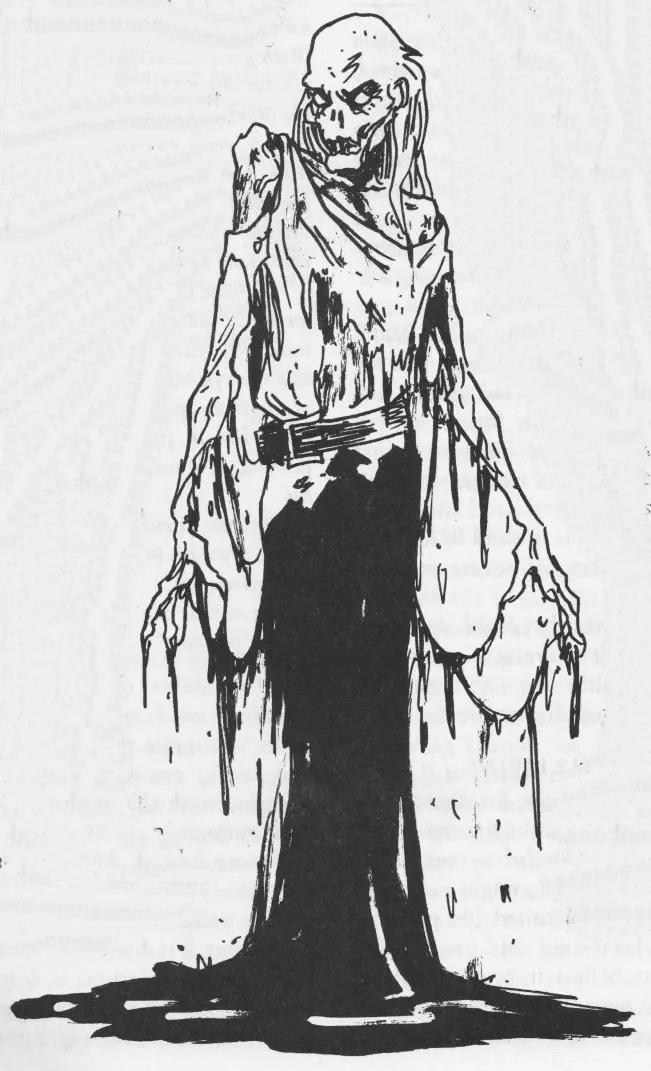Years ago, Alderac Entertainment Group (AEG) published a few "splatbooks" for 3rd Edition D&D, and one of these books was titled Undead (with Mike Mearls as a credited writer). I've been reading it lately, because I play Pathfinder and I love player options. This is my fifth post about the book, covering the chapter "Secrets of undeath."
Not so secret any more
Chapter 6 is titled "Secrets of undeath," and it's basically a short story. This is, in a way, the content I value the most out of this book, because it's so dedicated to its own lore. It's done in an overly-analytical style that, when I'm not forgetting that this is actually just fiction, makes me chuckle. It's a little bit like Brahm Stoker, with the author of the chapter academically discussing the Book of Undying Life by legendary researcher Malik Sejul. And I'm not kidding: the tone of this chapter is so analytical that you'll sometimes forget that there is no Malik Sejul, and there is no Book of Undying Life, and that there's no reason for anybody to ever pretend like they're analyzing it for historical perspective. But that's what this chapter is, and I love it.
I sent excerpts of this chapter to one of my players, whose current character's mission it is to help his previous dead character to achieve lichdom. His current character stumbled upon the Book of Undying Life in a wizard's library, and happily I had amazing content to share.
This chapter is about half excerpts from the Book of the Undying Life and half analysis. The great thing about the "excerpts" is that they're in-world writing. There are paragraphs detailing the ceremony involved in creating a lich, with step-by-step instructions. The "cult of Lochai" is the central power throughout this chapter, which I love because nobody's heard of the cult of Lochai. It's not Forgotten Realms lore or Golarion lore, it's ancient and forgotten lore. It's stuff players and player characters don't know about because it's dangerous and forbidden knowledge.
It feels that way, reading this chapter. You feel like you've gotten your hands on something truly rare. You've discovered the ceremonies and techniques for creating immortal beings. You feel as if you shouldn't be reading it, but you want more when it's over.
And then you remember that both the ancient text and the scholarly text analyzing it in "retrospect" are equally fake. But ultimately you don't care, because it's just too cool.

Undead
I'd recommend this book, but it's well out of print and you won't likely be able to find it. But this book is the kind of "excess" I love. It's by no means an essential supplement for D&D or for the old d20 system. Nobody needs this book now, and probably nobody needed it when it was published. The 3rd edition rules and Monster Manual had plenty of material to feed into the imaginations of players and game masters. But the open license emboldened and empowered publishers to release "splat books" like this. These books exist because some people just can't get enough. Some people enjoy obsessing over fantasy worlds and rule systems. And to those people, these kinds of books were urgently inspiring. What was there when you finished reading your Dragon magazine for the second time? Well, there's always Undead, and other great AEG releases (some of which I'll be reviewing in future posts.)
Black and white art from AEG Undead.
Ravenloft art copyright by Wizards of the Coast, used under the fan content policy.